Welcome to our blog post on “Calibrachoa Care Tips for Thriving Balcony Flower Displays.” If you’re looking to add a burst of vibrant colors and beauty to your balcony, calibrachoa flowers are an excellent choice. These stunning blooms, also known as million bells, can transform your balcony into a floral paradise. However, to ensure they flourish and dazzle throughout the season, proper care and attention are essential. In this article, we will provide you with expert tips and guidance to help you create a flourishing balcony garden with calibrachoa. From choosing the right location to mastering watering and fertilizing techniques, you’ll discover all the secrets to nurturing healthy and vibrant calibrachoa plants. Let’s dive in and elevate your balcony flower displays to new heights!

Types of Calibrachoa:
Calibrachoa Million Bells Series:
The Million Bells Series of Calibrachoa is popular for balcony gardening due to its abundant blooms and trailing habit. Its flowers come in vibrant shades of pink, purple, blue, yellow, and white. These compact plants are perfect for hanging baskets and window boxes, where their cascading flowers create a breathtaking display. Care includes full sunlight for 6-8 hours, well-draining soil, and thorough watering. Regular deadheading promotes continuous blooming for a stunning flower show all season.
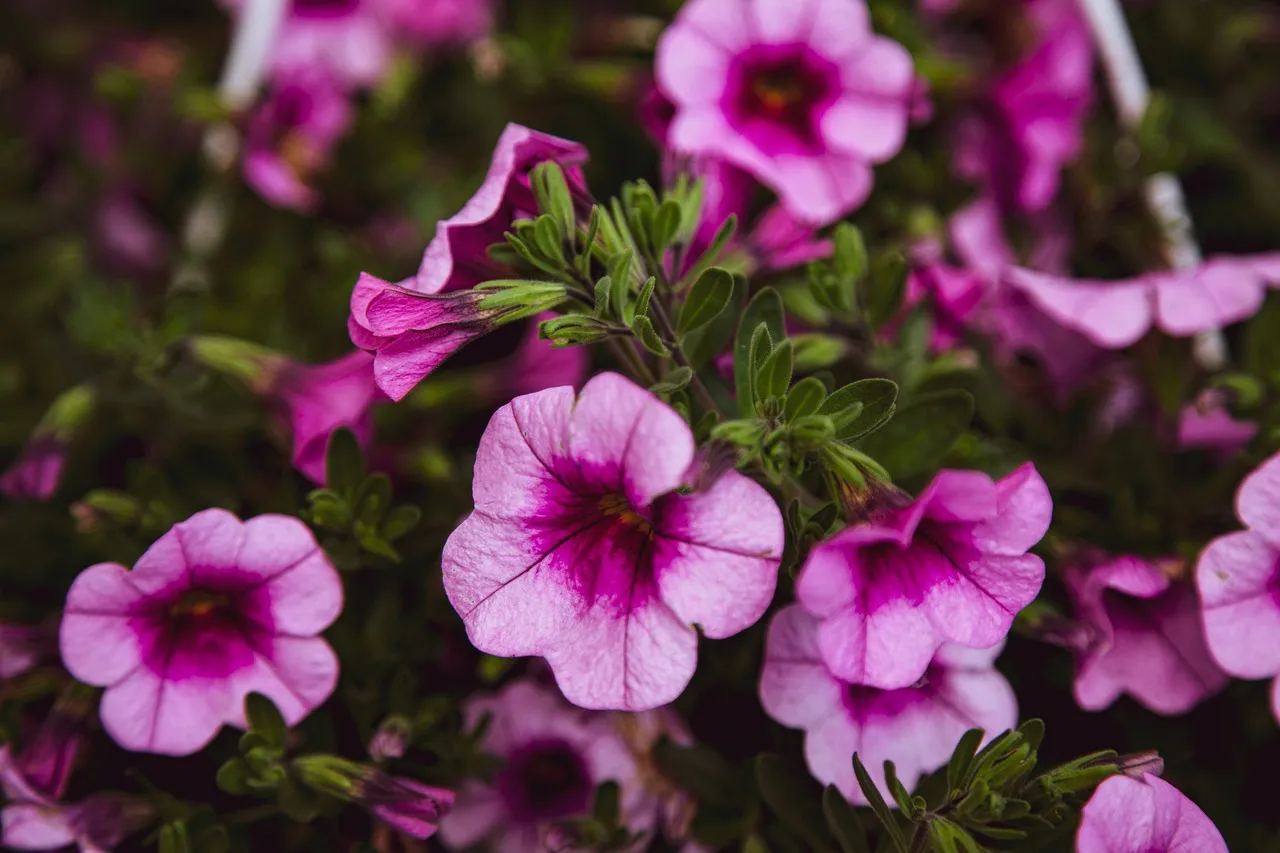
Calibrachoa Superbells Series:
The Superbells Series of Calibrachoa is renowned for its bold and intense flower colors, ranging from fiery oranges and reds to deep purples and velvety blues. These heat-tolerant and low-maintenance plants are perfect for adding a burst of color to any balcony garden. The Superbells Calibrachoa thrive in full sun and well-draining soil. Water them sufficiently to keep the soil moist but not waterlogged. Regular fertilization with a balanced, water-soluble fertilizer will boost their flower production and overall health. These vigorous and trailing plants are ideal for hanging baskets and containers, where their vibrant blooms will steal the spotlight.
Calibrachoa Cabaret Series:
The Cabaret Series of Calibrachoa boasts a range of bi-colored flowers, each petal displaying a captivating combination of hues. From soft pastels to bold contrasts, the Cabaret Calibrachoa offers a delightful color palette for your balcony garden. These compact and mounding plants are versatile and suitable for both containers and garden beds. Plant them in a sunny spot with well-draining soil and water them consistently. Deadheading is crucial to maintain their flower production and tidy appearance. With proper care and attention, the Cabaret Calibrachoa will reward you with an enchanting display of bi-colored blooms throughout the growing season.
Calibrachoa MiniFamous Series:
The MiniFamous Series of Calibrachoa is adored for its mini-petunia-like flowers and abundant bloom production. These charming and compact plants are perfect for small spaces and hanging baskets. The MiniFamous Calibrachoa come in a wide array of colors, from soft pastels to bold and vibrant shades. Plant them in well-draining soil and ensure they receive plenty of sunlight to thrive. Ensure soil stays consistently moist by watering regularly. Promote continuous blooming through regular deadheading of spent flowers. The MiniFamous Calibrachoa will captivate you with their profusion of mini blooms, adding a touch of elegance to your balcony garden.

Calibrachoa Aloha Kona Series:
The Aloha Kona Series of Calibrachoa is adored for its unique flower patterns with contrasting colors and intricate markings. They prefer full sun and well-draining soil. Thoroughly water them, allowing excess water to drain. Regularly feed with balanced fertilizer for flower production and growth. Deadhead to promote continuous blooming for a dazzling display on your balcony. The Aloha Kona Calibrachoa will become the centerpiece of your garden, showcasing their exotic beauty and these plants are preferred for containers and hanging baskets.
Each of these Calibrachoa series offers its unique charm and beauty, catering to different preferences and styles for balcony gardening. By selecting the appropriate type for your balcony garden and providing them with proper care and attention, you’ll be rewarded with a thriving and enchanting floral display that will brighten up your outdoor space throughout the growing season.
Calibrachoa Care Tips for Thriving Balcony Flower Displays:
The Perfect Balcony Spot: Choosing the Ideal Location for Your Calibrachoa
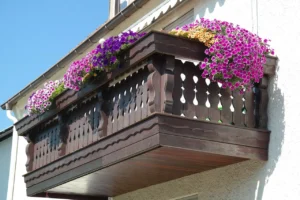
Selecting the right location for your calibrachoa plants is vital to their overall health and performance in your balcony garden. First, observe the amount of sunlight your balcony receives throughout the day. Calibrachoa thrives in full sun, so choose a spot with at least 6-8 hours of direct sunlight. Consider the microclimate of your balcony, noting factors like wind exposure and temperature fluctuations. A protected area can shield calibrachoa from strong winds and extreme heat or cold. Ensure good air circulation to prevent humidity build-up, which may lead to fungal issues. Evaluate the available space and check for any weight restrictions if you plan to use large containers. A sturdy railing or wall-mounted hooks can offer ample support for your balcony flower displays. Keep the height of neighboring structures in mind to prevent shading. By assessing these factors, you’ll create an optimal environment for your calibrachoa to thrive and flourish.
Picking the Right Calibrachoa Varieties: Tailoring Your Balcony Garden

With a plethora of calibrachoa varieties available, selecting the perfect ones for your balcony garden can be an exciting endeavor. Begin by considering the color scheme you desire and how the blooms will complement your overall balcony decor. Opt for a mix of vibrant hues or stick to a single color palette for a cohesive look. Next, determine whether you want single-colored or bi-colored flowers to add depth to your display. Take note of the mature size of each variety to ensure they fit well within your available space. Some calibrachoa varieties have trailing habits, making them ideal for hanging baskets, while others stay more compact, suitable for containers. Additionally, explore the options for both traditional calibrachoa and mini-petunia types, each with unique characteristics. By carefully curating a diverse collection of calibrachoa varieties, you’ll craft a balcony garden that bursts with beauty and personalization.
Sun and Shade Balance: Understanding Calibrachoa’s Light Requirements
One of the key factors in successfully caring for calibrachoa is striking the right balance between sun and shade. As sun-loving plants, calibrachoa thrives in full sun conditions. Place your balcony flower displays in an area that receives ample sunlight, ideally 6-8 hours daily. If your balcony is partially shaded, ensure the plants still receive at least 4-6 hours of direct sunlight. To maximize flower production and ensure vibrant blooms, place your calibrachoa in a sunny spot on your balcony. However, beware of scorching afternoon sun, as it can lead to wilting and stress. Observe the sun’s movement throughout the day to determine the best location for your calibrachoa. If your balcony lacks sufficient sunlight, consider using reflective materials or mirrors to bounce light onto the plants. By understanding and fulfilling calibrachoa’s light requirements, you’ll create an environment where they can thrive and produce an abundance of stunning flowers.
Soil Secrets: Preparing the Best Growing Medium for Calibrachoa
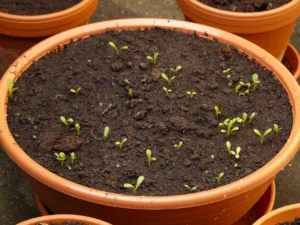
The key to a healthy calibrachoa garden is quality soil. Use a well-draining and nutrient-rich potting mix. Avoid waterlogging and root rot with good drainage. Enhance aeration and drainage by adding perlite or vermiculite. Enrich the soil with compost or manure for essential nutrients. Aim for a slightly acidic to neutral pH (around 5.5 to 7.0). Avoid garden soil, as it may compact and hinder root growth. By preparing the best growing medium, you’ll establish a solid foundation for calibrachoa’s growth.
Watering Wisely: Tips for Proper Hydration of Calibrachoa Plants

Proper watering is crucial for the well-being of your calibrachoa plants. These delicate beauties prefer consistently moist soil but can’t tolerate standing water or overly soggy conditions. When watering, aim for a thorough soak, allowing excess water to drain freely from the containers. Ensure the water reaches the root zone without splashing the foliage, as wet leaves can lead to disease issues. The frequency of watering depends on various factors, including weather conditions and container size. In hot weather, calibrachoa may require watering daily or even twice a day, while cooler conditions may call for less frequent watering. To gauge the moisture level of the soil, stick your finger about an inch deep into
The Perfect Balcony Spot: Choosing the Ideal Location for Your Calibrachoa
Selecting the right location for your calibrachoa plants is vital to their overall health and performance in your balcony garden. First, observe the amount of sunlight your balcony receives throughout the day. Calibrachoa thrives in full sun, so choose a spot with at least 6-8 hours of direct sunlight. Consider the microclimate of your balcony, noting factors like wind exposure and temperature fluctuations. A protected area can shield calibrachoa from strong winds and extreme heat or cold.
Ensure good air circulation to prevent humidity build-up, which may lead to fungal issues. Evaluate the available space and check for any weight restrictions if you plan to use large containers. A sturdy railing or wall-mounted hooks can offer ample support for your balcony flower displays. Keep the height of neighboring structures in mind to prevent shading. By assessing these factors, you’ll create an optimal environment for your calibrachoa to thrive and flourish.
Picking the Right Calibrachoa Varieties: Tailoring Your Balcony Garden
With a plethora of calibrachoa varieties available, selecting the perfect ones for your balcony garden can be an exciting endeavor. Begin by considering the color scheme you desire and how the blooms will complement your overall balcony decor. Opt for a mix of vibrant hues or stick to a single color palette for a cohesive look. Next, determine whether you want single-colored or bi-colored flowers to add depth to your display. Take note of the mature size of each variety to ensure they fit well within your available space.
Some calibrachoa varieties have trailing habits, making them ideal for hanging baskets, while others stay more compact, suitable for containers. Additionally, explore the options for both traditional calibrachoa and mini-petunia types, each with unique characteristics. By carefully curating a diverse collection of calibrachoa varieties, you’ll craft a balcony garden that bursts with beauty and personalization.
Sun and Shade Balance: Understanding Calibrachoa’s Light Requirements
One of the key factors in successfully caring for calibrachoa is striking the right balance between sun and shade. As sun-loving plants, calibrachoa thrives in full sun conditions. Place your balcony flower displays in an area that receives ample sunlight, ideally 6-8 hours daily. If your balcony is partially shaded, ensure the plants still receive at least 4-6 hours of direct sunlight. However, beware of scorching afternoon sun, as it can lead to wilting and stress.
Observe the sun’s movement throughout the day to determine the best location for your calibrachoa. If your balcony lacks sufficient sunlight, consider using reflective materials or mirrors to bounce light onto the plants. By understanding and fulfilling calibrachoa’s light requirements, you’ll create an environment where they can thrive and produce an abundance of stunning flowers.
Soil Secrets: Preparing the Best Growing Medium for Calibrachoa
The foundation of a healthy calibrachoa garden lies in the quality of the growing medium. Before planting, ensure you have a well-draining and nutrient-rich soil mix. A lightweight potting mix with good drainage will prevent waterlogging and root rot, keeping your calibrachoa’s root system healthy. To enhance aeration and drainage, think about adding perlite or vermiculite to the soil. Additionally, mix in organic matter like compost or well-rotted manure to enrich the soil with essential nutrients.
Test the pH level of the soil and aim for a slightly acidic to neutral range (around 5.5 to 7.0) to support optimal nutrient uptake. Be cautious of using garden soil, as it can become compacted and hinder root growth. By preparing the best growing medium for your calibrachoa, you’ll establish a solid foundation for their growth and overall well-being.
Watering Wisely: Tips for Proper Hydration of Calibrachoa Plants
Proper watering is crucial for the well-being of your calibrachoa plants. These delicate beauties prefer consistently moist soil but can’t tolerate standing water or overly soggy conditions. When watering, aim for a thorough soak, allowing excess water to drain freely from the containers. Ensure the water reaches the root zone without splashing the foliage, as wet leaves can lead to disease issues. The frequency of watering depends on various factors, including weather conditions and container size.
In hot weather, calibrachoa may require watering daily or even twice a day, while cooler conditions may call for less frequent watering. To gauge the moisture level of the soil, stick your finger about an inch deep into the soil. Water if it feels dry to the touch. Adjust your watering schedule accordingly to maintain the ideal moisture level for your calibrachoa plants, ensuring they remain hydrated and vibrant.
Fertilizing for Blooms: Boosting Flower Production in Your Balcony Garden
To encourage abundant blooms and vigorous growth, proper fertilization is essential for your calibrachoa. Choose a balanced, water-soluble fertilizer with equal or nearly equal amounts of nitrogen, phosphorus, and potassium (N-P-K) to support overall plant health and flower production. A fertilizer labeled 20-20-20 or 10-10-10 is suitable for calibrachoa. Begin fertilizing once your calibrachoa begins to establish, usually after about two weeks from planting.
During the growing season, feed your plants every two to three weeks, following the manufacturer’s recommended dosage. Be cautious not to over-fertilize, as excessive nutrients can lead to excessive foliage growth at the expense of flower production. Always water your plants before applying fertilizer to prevent root burn. By providing your calibrachoa with the right nutrients and proper fertilization, you’ll witness a splendid display of blooms that adds charm to your balcony garden.
Pruning Pointers: How to Maintain Compact and Lush Calibrachoa Plants

Pruning is an essential practice for keeping your calibrachoa plants compact, tidy, and blooming prolifically. Regular deadheading, which involves removing spent flowers, encourages the production of new buds and prolongs the flowering season. Use clean, sharp scissors or pruning shears to cut the stems just above a healthy set of leaves or nodes. This will prevent seed formation, directing the plant’s energy into producing more flowers.
Additionally, trim back any leggy or overgrown stems to promote bushier growth. Don’t be afraid to prune the plant to one-third of its size if it becomes too lanky. However, avoid cutting into woody parts of the stem, as calibrachoa doesn’t usually respond well to hard pruning. By mastering pruning techniques, you’ll keep your calibrachoa plants in shape, ensuring they maintain a lush and visually pleasing appearance in your balcony garden.
Pest Patrol: Protecting Your Balcony Flowers from Unwanted Visitors
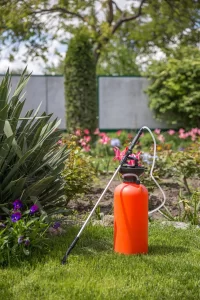
While calibrachoa is generally resilient, it’s not immune to pest attacks. Keep a close eye on your balcony flower displays for signs of common pests like aphids, spider mites, and whiteflies. Early detection is key to preventing infestations from spreading and causing extensive damage. Use natural pest control methods like introducing ladybugs or beneficial insects to prey on harmful pests. For minor infestations, you can also blast pests off your plants with a strong jet of water.
For more severe cases, consider using organic insecticidal soaps or neem oil, which are safe and effective against many common pests. Always follow the product instructions and avoid applying pesticides during the heat of the day or when the plant is stressed. By implementing proactive pest control measures, you’ll safeguard your calibrachoa plants and ensure they thrive without interference from unwanted visitors.
Troubleshooting Common Calibrachoa Issues: Tips for a Healthy Display
Despite your best efforts, calibrachoa may face certain challenges that require quick attention. If you notice wilting, check the soil moisture and adjust your watering accordingly. Wilting could be a sign of both underwatering or overwatering. Yellowing leaves may indicate nutrient deficiencies, so ensure your plants receive proper fertilization. If leaves show discoloration or spots, it might indicate fungal or bacterial diseases. Remove affected leaves and avoid overhead watering to prevent the spread of diseases.
Root rot is a common issue caused by overly wet soil; if you suspect root rot, repot the plant in fresh, well-draining soil. During extreme weather, such as heatwaves or heavy rains, provide additional protection to shield your calibrachoa from stress. Vigilance and prompt action in troubleshooting issues will help maintain a healthy and vibrant display of calibrachoa in your balcony garden.
Seasonal Transitions: Preparing Your Calibrachoa for Changing Weather
As the seasons change, your calibrachoa requires appropriate care and preparation to withstand different weather conditions. Before the onset of winter, assess your local climate and the cold hardiness of your calibrachoa varieties. If temperatures are expected to drop below freezing, consider bringing your plants indoors or providing frost protection. Gradually acclimate your calibrachoa to indoor conditions by placing them in a shaded area for a few hours each day before moving them indoors permanently.
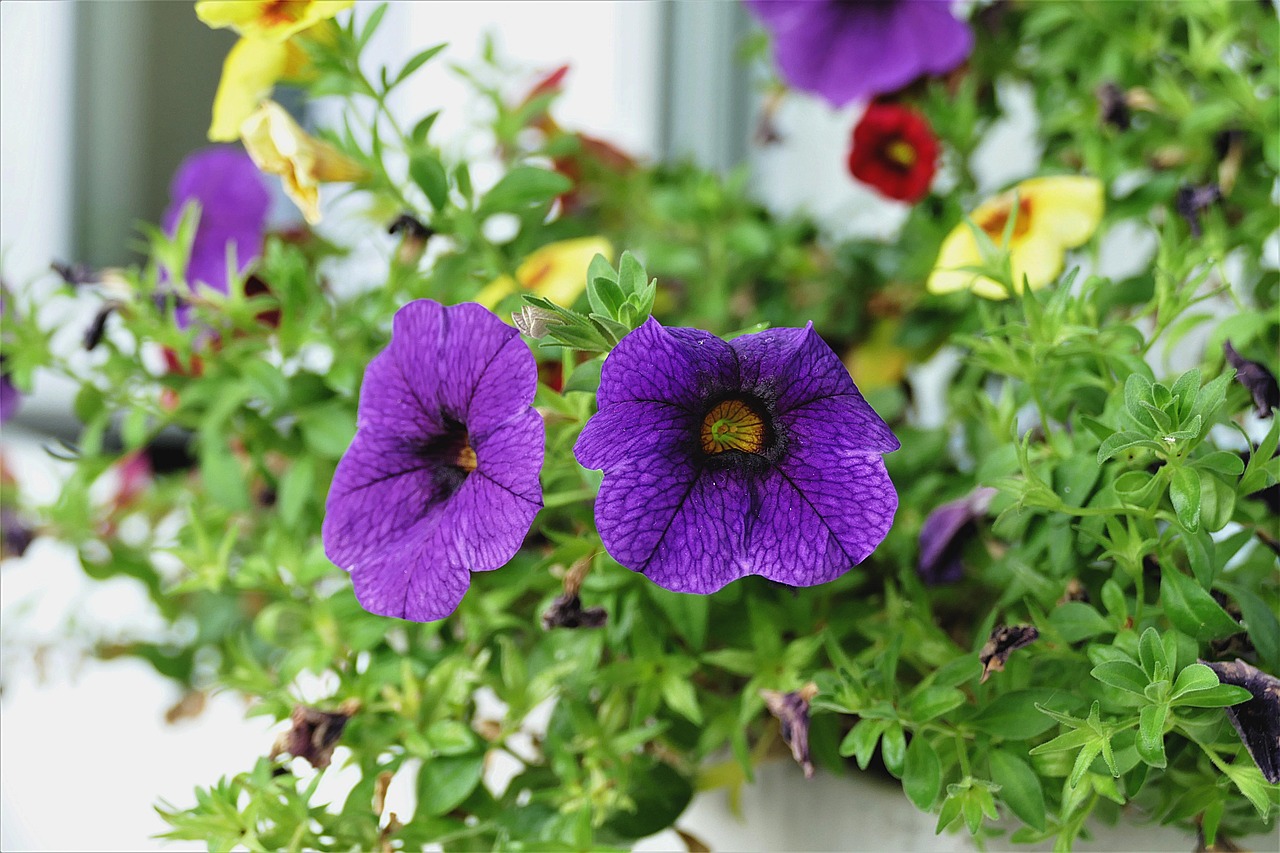
Reduce watering during the dormant winter months to prevent root rot. Once the threat of frost has passed in spring, reintroduce your calibrachoa to outdoor conditions. During the transition, observe your plants for any signs of stress and make necessary adjustments to ensure they adapt well. By carefully preparing your calibrachoa for seasonal changes, you’ll help them thrive year-round, regardless of the weather fluctuations.
Overwintering Strategies: Ensuring Calibrachoa Survival in Colder Months
Overwintering is essential if you wish to preserve your calibrachoa plants through the colder months and have them flourish again in spring. If your climate experiences mild winters, you can take precautions to protect your calibrachoa outdoors. Use protective covers or cloths on frosty nights and provide extra mulch around the roots to insulate the soil. However, in regions with harsh winters, it’s best to bring your calibrachoa indoors to keep them safe.
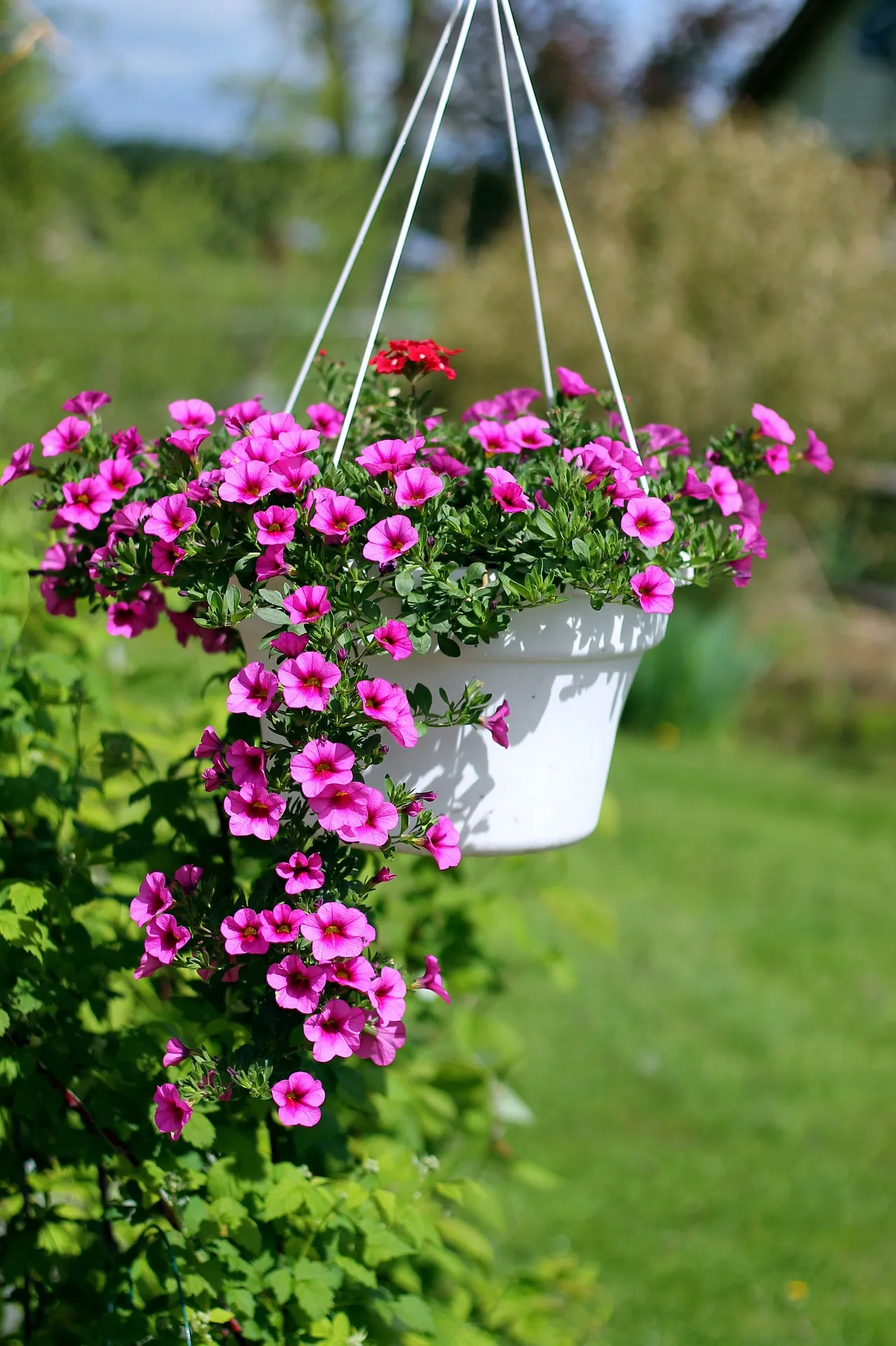
Before the first frost, carefully dig up your plants, ensuring you retain as much of the root ball as possible. Trim back the foliage to reduce stress on the plant. Pot them in well-draining containers with fresh potting soil and water lightly. Place your overwintered calibrachoa in a cool, bright location with indirect sunlight, like a sunroom or conservatory. Avoid placing them near heat sources or in drafty areas. By adopting suitable overwintering strategies, you’ll protect your calibrachoa from freezing temperatures and ensure their successful return in the following spring.
Complementary Plant Combinations: Enhancing Your Balcony with Calibrachoa
To create a visually captivating balcony garden, consider pairing your calibrachoa with complementary plants that highlight their beauty. Calibrachoa’s trailing habit makes them perfect companions for upright or bushy plants. Mix and match different flower shapes and colors to create eye-catching displays. Consider combining calibrachoa with other annuals like petunias, lobelia, or verbena for a stunning arrangement. For added texture and interest, incorporate ornamental grasses or spiky foliage plants.
Introduce trailing vines like ivy or sweet potato vine to create lush, cascading effects in hanging baskets. Explore the world of foliage plants, using contrasting leaf shapes and colors to complement your calibrachoa’s blooms. By carefully curating complementary plant combinations, you’ll craft an enchanting and harmonious balcony garden that showcases the beauty of calibrachoa in all its splendor.
Container Gardening Hacks: Optimal Pot Selection for Thriving Calibrachoa
Choosing the right containers is crucial for the successful growth of your calibrachoa in a balcony garden. Choose containers with drainage holes to avoid waterlogging and root rot. Additionally, ensure the containers are of sufficient size to accommodate the mature growth of your calibrachoa varieties. Too small of a container can restrict root development and stunt the plant’s growth. Consider the material of the pots as well; terracotta pots allow for better aeration, while plastic containers retain moisture better.

For hanging baskets, choose ones with sturdy chains or hooks to support the weight of your calibrachoa as they grow and cascade. If you prefer a cohesive look, select pots in similar colors or materials for a unified aesthetic. By applying these container gardening hacks, you’ll provide the optimal environment for your calibrachoa to thrive and enhance the visual appeal of your balcony garden.
Sustainable Practices: Eco-Friendly Care for Your Calibrachoa Garden
Embracing sustainable gardening practices can benefit both your calibrachoa and the environment. Start by using organic fertilizers and compost to enrich the soil without introducing harmful chemicals. Collect rainwater in barrels to use for watering, reducing reliance on municipal water sources. Introduce beneficial insects and birds to control pests naturally, minimizing the need for pesticides. Utilize natural pest deterrents like garlic spray or neem oil to protect your plants without harming beneficial insects.
Consider repurposing items like old containers or furniture for your balcony garden, reducing waste. Implementing a companion planting strategy can also attract pollinators and beneficial insects, enhancing the overall health of your garden ecosystem. By adopting eco-friendly practices, you’ll not only create a thriving calibrachoa garden but also contribute to a healthier and more sustainable environment.
Year-Round Beauty: Extending the Lifespan of Your Calibrachoa Flowers
To ensure a continuous display of calibrachoa blooms throughout the growing season, proper care is essential. Regular deadheading, as mentioned earlier, encourages continuous flower production. Remove any spent flowers promptly to promote new buds and prevent seed formation. As the season progresses, cut back any leggy or unproductive stems to encourage fresh growth and rejuvenation. Monitor your calibrachoa plants closely for any signs of stress or disease, taking immediate action to address issues before they escalate.
Keep the plants well-fed with a balanced fertilizer to maintain their vigor and flower production. Protect your calibrachoa from extreme weather conditions, providing shelter during harsh conditions. By extending the lifespan of your calibrachoa flowers, you’ll create a stunning and vibrant balcony garden that captivates throughout the entire growing season.
Conclusion
In conclusion, by implementing the right care tips, you can create a thriving and vibrant balcony garden filled with the beauty of calibrachoa flowers. Selecting the ideal location, providing the right amount of sunlight, and using well-draining soil are essential factors for their well-being. Wisely managing watering and fertilizing practices will ensure your calibrachoa plants remain healthy and produce an abundance of blooms. Regular pruning and pest control efforts will keep them compact and free from unwanted visitors. Troubleshooting common issues and preparing for seasonal changes will further safeguard their growth.
Additionally, exploring different calibrachoa varieties and combining them with complementary plants will add flair and personality to your balcony garden. Embracing sustainable practices will not only benefit your calibrachoa but also contribute to a healthier environment. With the knowledge gained from these care tips, you can extend the lifespan of your calibrachoa flowers and maintain their year-round beauty in your balcony garden. By providing the love and attention they deserve, your calibrachoa will reward you with a stunning display of color and elegance, transforming your balcony into a breathtaking floral oasis.
Most Frequently Asked Questions on Calibrachoa
What is Calibrachoa, and why is it popular for balcony gardening?
Calibrachoa, also known as million bells, is a charming and prolific flowering plant popular for balcony gardening due to its stunning cascading blooms and vibrant colors. With their petite and bell-shaped flowers, they add a touch of elegance and beauty to any balcony garden. Calibrachoa’s trailing habit makes them ideal for hanging baskets, window boxes, and containers, creating a lush and visually appealing display.
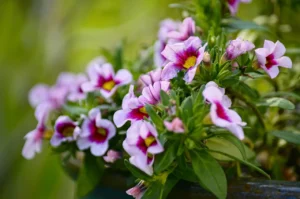
How much sunlight do calibrachoa plants need to thrive on a balcony?
Calibrachoa is a sun-loving plant and thrives in full sunlight. For the best results in your balcony garden, ensure your calibrachoa receives at least 6-8 hours of direct sunlight daily. However, they can tolerate partial shade, provided they still receive a minimum of 4-6 hours of sunlight. To maximize flower production and ensure vibrant blooms, place your calibrachoa in a sunny spot on your balcony.
What type of soil is best for calibrachoa plants in a balcony garden?
Calibrachoa prefers a well-draining and nutrient-rich soil mix in a balcony garden. Use a lightweight potting mix with good drainage to prevent waterlogging and root rot. Adding organic matter, like compost or well-rotted manure, can enrich the soil with essential nutrients. Aim for a slightly acidic to neutral pH level (around 5.5 to 7.0) to promote optimal nutrient uptake and overall plant health.
How often should I water my calibrachoa plants in a balcony garden?
Proper watering is crucial for calibrachoa’s health and performance. Water your calibrachoa plants thoroughly, allowing excess water to drain from the containers. The frequency of watering depends on factors such as weather conditions, container size, and soil drainage. In hot weather, calibrachoa may require daily watering or even twice a day, while cooler conditions may call for less frequent watering. Always check the soil moisture and water when it feels dry to the touch about an inch deep.
How can I encourage more blooms on my calibrachoa plants in a balcony garden?
To boost flower production in your balcony garden, regular deadheading is essential. Deadhead or remove spent flowers promptly to encourage the plant to produce new buds continuously. This practice prevents seed formation and redirects the plant’s energy into blooming profusely. Additionally, ensure your calibrachoa receives proper fertilization with a balanced, water-soluble fertilizer. Feed the plants every two to three weeks during the growing season to support their vigor and abundant blooms.
Do calibrachoa plants require pruning in a balcony garden?
Yes, pruning plays a crucial role in maintaining compact and lush calibrachoa plants in a balcony garden. Regular deadheading, as mentioned earlier, is a form of pruning that encourages continuous flower production. Additionally, trim back any leggy or overgrown stems to promote bushier growth and a more aesthetically pleasing appearance. Avoid cutting into woody parts of the stem, as calibrachoa may not respond well to hard pruning.
How can I protect my calibrachoa plants from pests in a balcony garden?
While calibrachoa is generally resilient, they can be susceptible to pest attacks. Monitor your balcony flower displays closely for signs of common pests like aphids, spider mites, and whiteflies. To prevent infestations from spreading, it’s vital to detect issues early. Consider introducing beneficial insects like ladybugs to prey on harmful pests naturally. In case of minor infestations, you can wash pests off your plants with a strong jet of water. Organic insecticidal soaps or neem oil can also be effective against pests if the infestation is severe.
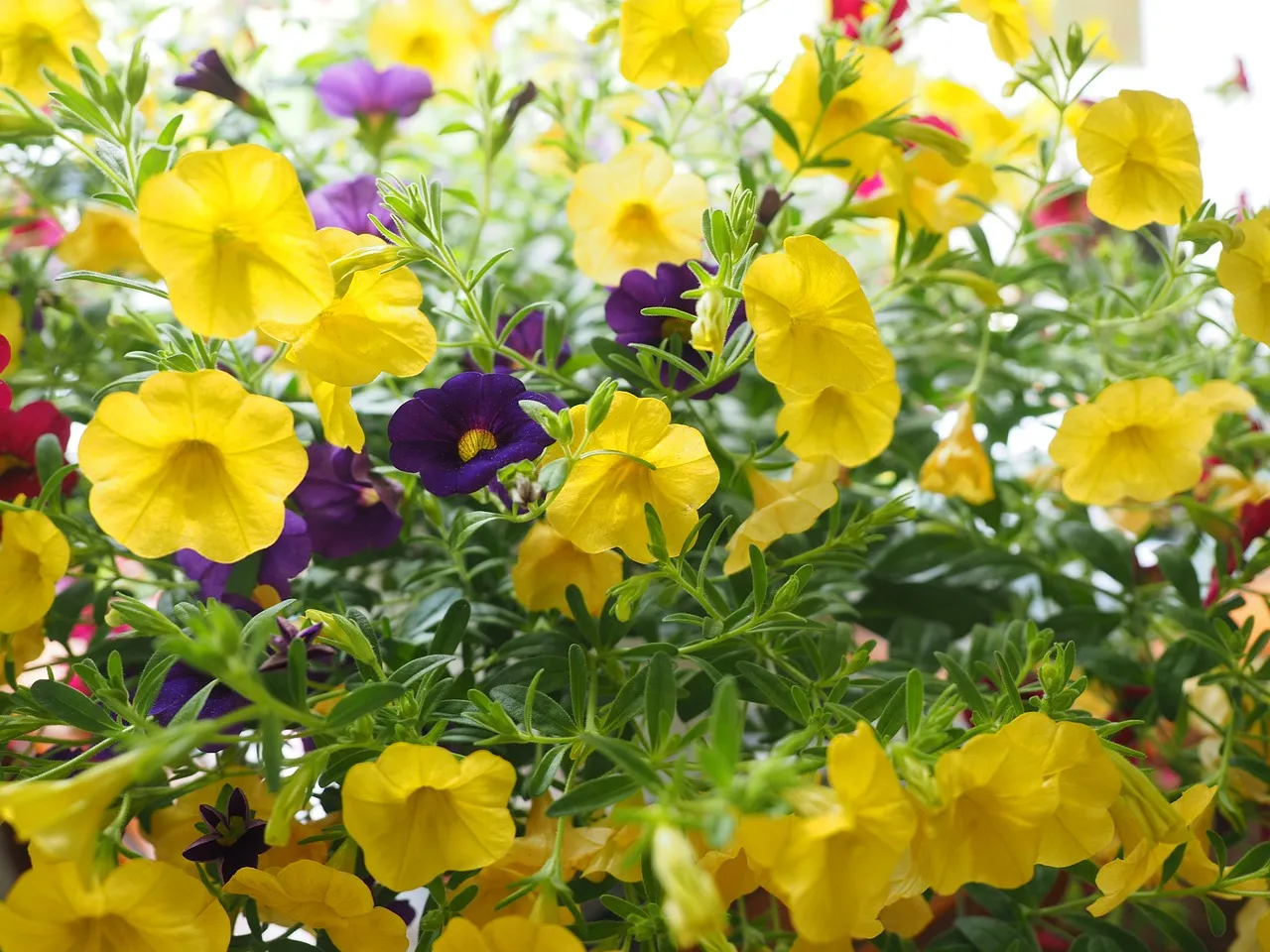
What are some common issues faced with calibrachoa in a balcony garden?
Calibrachoa may face certain challenges in a balcony garden, including wilting, yellowing leaves, discoloration, and spots. Wilting can be due to both underwatering or overwatering, so carefully observe soil moisture and adjust watering accordingly. Yellowing leaves may indicate nutrient deficiencies, requiring proper fertilization. Discoloration or spots on leaves may signify fungal or bacterial diseases; remove affected leaves promptly and avoid overhead watering to prevent disease spread.
How should I prepare my calibrachoa plants for seasonal transitions in a balcony garden?
As the seasons change, it’s essential to prepare your calibrachoa plants for varying weather conditions. Before winter, assess your local climate and the cold hardiness of your calibrachoa varieties. Provide frost protection with covers or cloths on frosty nights and add extra mulch around the roots. In regions with harsh winters, bring your calibrachoa indoors to protect them from freezing temperatures. Gradually acclimate them to indoor conditions before moving them indoors permanently.

How can I extend the lifespan of my calibrachoa flowers in a balcony garden?
To ensure continuous blooms throughout the growing season, practice regular deadheading to encourage new buds. Monitor your calibrachoa closely for signs of stress, diseases, or pests and address issues promptly. Maintain proper fertilization and watering to support their vigor and flower production. Protect your calibrachoa from extreme weather conditions, providing shelter during harsh weather. By following these tips, you’ll extend the lifespan of your calibrachoa flowers, creating a beautiful and thriving balcony garden display year-round.
#Calibrachoa #BalconyGarden
